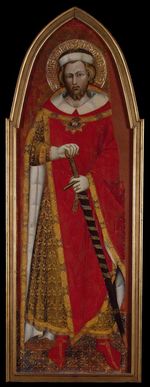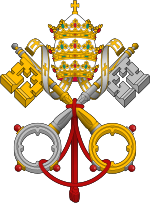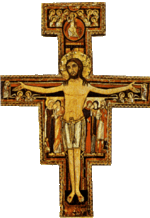Pope Pontian
| Pontian | |
|---|---|
 |
|
| Papacy began | 21 July 230 |
| Papacy ended | 29 September 235 |
| Predecessor | Urban I |
| Successor | Anterus |
| Personal details | |
| Birth name | Pontianus |
| Born | ??? ??? |
| Died | 29 September 235 Sardinia, Roman Empire |
| Papal styles of Pope Pontian |
|
|---|---|
 |
|
| Reference style | His Holiness |
| Spoken style | Your Holiness |
| Religious style | Holy Father |
| Posthumous style | Saint |
Pope Saint Pontian or Pontianus was pope from 21 July 230 to 29 September 235.
A little more is known of Pontian than his predecessors, apparently from a lost papal chronicle that was available to the compiler of the Liberian Catalogue of bishops of Rome, made in the fourth century (Catholic Encyclopedia).
During his pontificate the schism of Hippolytus came to an end. Pontian and other church leaders, among them Hippolytus, were exiled by the emperor Maximinus Thrax to Sardinia, and in consequence of this sentence he resigned on 25 September or 28 September 235. It is unknown how long he lived in exile: according to Liber Pontificalis he died due to the inhuman treatment he received in the Sardinian mines. According to tradition, he died on the island of Tavolara.
His feast day was 19 November, but he is now celebrated jointly with his erstwhile adversary and rival, Hippolytus of Rome, on 13 August.[1]
Tomb
His remains were brought to Rome by Pope Fabian and buried in the Catacomb of Pope Callixtus I. His epitaph was rediscovered in 1909 in the crypt of St. Cecilia, near the papal crypt, reading PONTIANOS, EPISK. ("Pontianus, bishop"). The inscription "MARTUR" ("martyr") had been added in another hand.
References
 "Pope St. Pontian" in the 1913 Catholic Encyclopedia.
"Pope St. Pontian" in the 1913 Catholic Encyclopedia.
- ↑ Calendarium Romanum (Libreria Editrice Vaticana 1969), p. 146
| Catholic Church titles | ||
|---|---|---|
| Preceded by Urban I |
Bishop of Rome Pope 230–235 |
Succeeded by Anterus |
|
|||||||||||||||||||||||||||||||||||||||||||||
|
|||||||||||||||||||||||||||||||||||||||||

